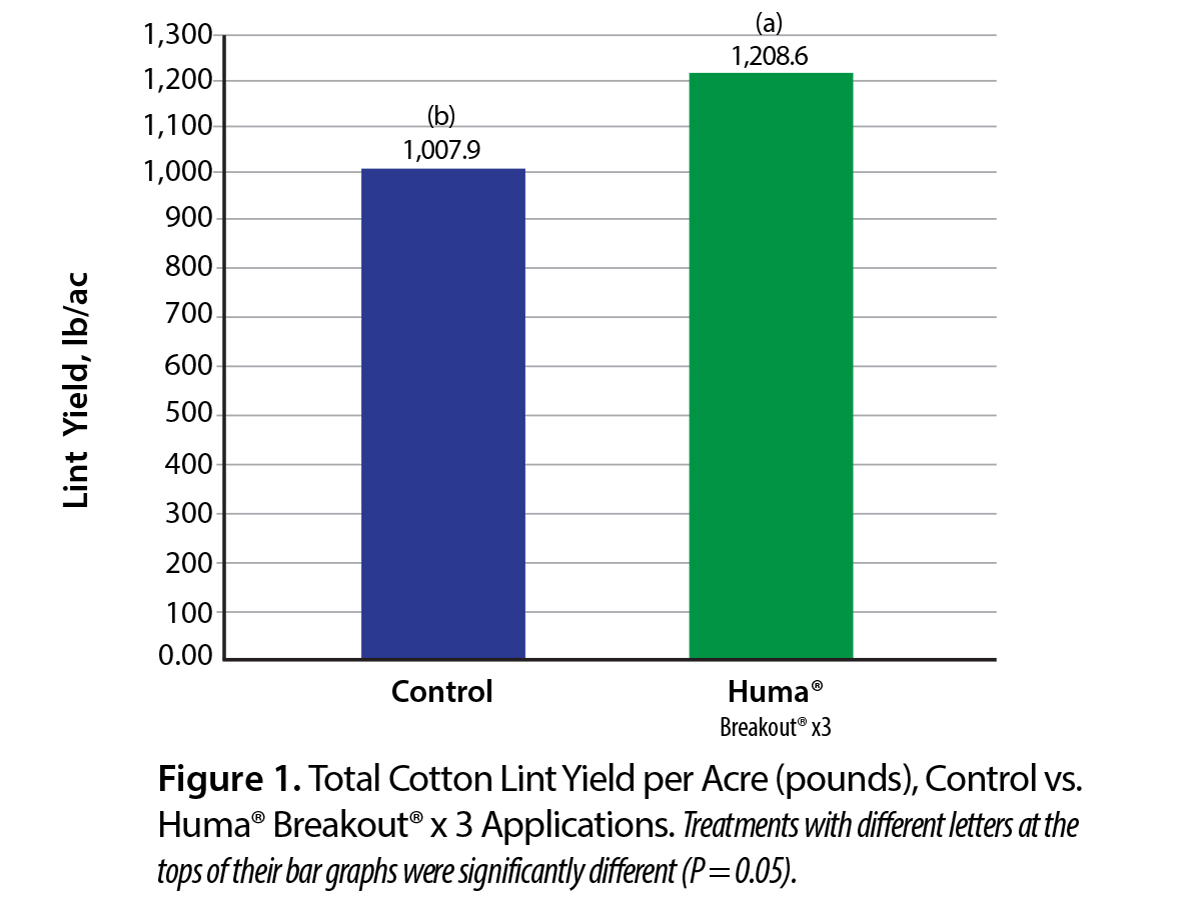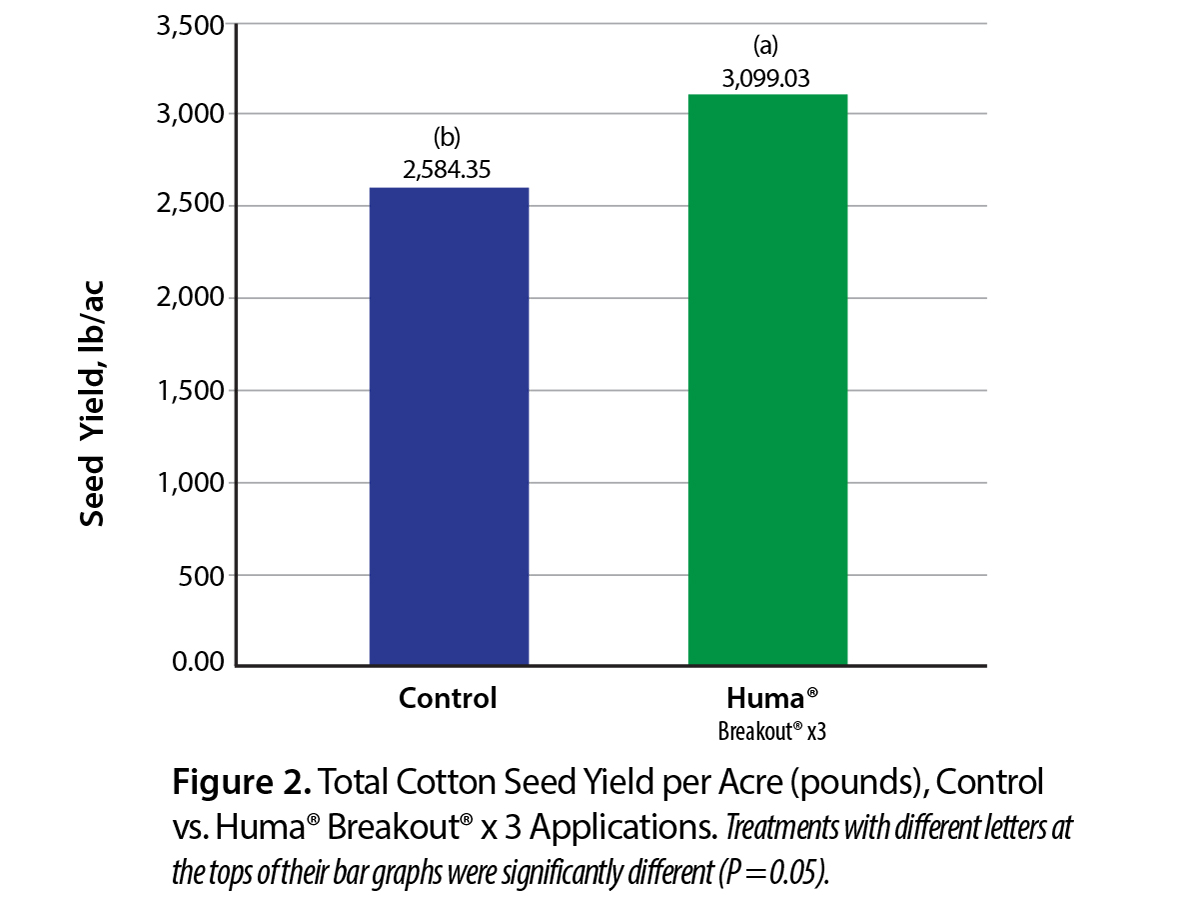Objective
This field trial assessed the effects of 3 foliar applications of Huma® Breakout® at different growth stages during the growing season on the yield of cotton (Gossypium hirsutum, variety PHY312) when compared with the grower's standard crop nutrition program.
Materials & Methods
This trial was set up in a complete randomized-block design of 10' x 30' plots replicated 4 times, conducted during the growing season of June through October in an area near Memphis, Tenn. A Huma® Breakout® treatment program and a control were compared: both groups received a treatment of grower's standard fertilizer plus an application of Pix (mepiquat chloride plant growth regulator) at 8 oz/ ac at growth stage "first pinhead squares" (PHS) and 16 oz/ ac at growth stages "PHS + 2 weeks" and "PHS + 4 weeks." In addition, the Huma® treatment group also received a foliarapplied treatment of Breakout® of 1 qt/ac at those three growth stages. Data were analyzed using ARM (Agricultural Resource Management) software.

Table 1 Treatments, Products, and Growth Stages
Results
Treatment costs and average yields of cotton lint and cotton seed are detailed in Table 2.
Fig. 1 shows that the cotton lint yield for Huma® Breakout® treatment was statistically significantly greater (a) than the yield for the control (b). Fig. 2 shows that the seed yield for Breakout® was statistically significantly greater (a) than for the control (b).

Figure 1. Total Cotton Lint Yield per Acre (pounds), Control vs.
Huma® Breakout® x 3 Applications. Treatments with different letters at the
tops of their bar graphs were significantly different (P = 0.05).

Figure 2. Total Cotton Seed Yield per Acre (pounds), Control
vs. Huma® Breakout® x 3 Applications. Treatments with different letters at
the tops of their bar graphs were significantly different (P = 0.05).
Conclusions
Based on the data collected in this trial, the Huma® Breakout® treatment (1 qt/acre at 3 growth stages) resulted in the highest cotton lint yield at 1,208.6 pounds per acre and the highest cotton seed yield at 3,099.03, both representing a yield increase of 20% over the control. At an application cost of $18.00/acre and a lint increase of 200.7 lb/ac over the control, with a market price of $0.72/lb this results in a net return-to-the-farm increase of $144.50 per acre—a return on investment (ROI) of 702.78%. The application of 1 qt/ac of Huma® Breakout® at 3 cotton plant growth stages was a cost-effective treatment for increasing cotton lint and seed yields.

